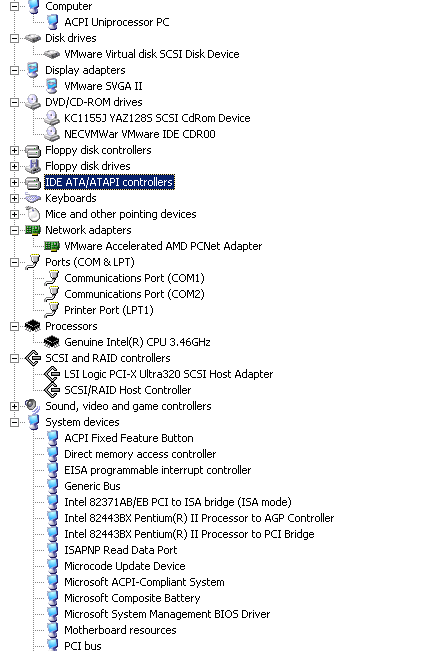Hardware Virtualization: the Nuts and Bolts
by Johan De Gelas on March 17, 2008 3:00 AM EST- Posted in
- IT Computing
I/O Virtualization
I/O is a big issue for any form of virtualization. If your virtualized server lacks CPU power, you can just add more CPUs or cores (i.e. replace dual-core CPUs with quad-cores). However, the memory bandwidth, the chipset, and storage HBA are in most cases shared by all virtual machines and a lot harder to "upgrade". Moreover, contrary to the CPU, the rest of the hardware in most virtualization software is emulated. This means that each access to the driver of a virtual hardware component must be translated to the real driver.

A real 3.46 GHz Intel Xeon processors runs on an emulated BX-chipset: we are running inside a VM.
If you inspect the hardware of a virtual machine in ESX for example, you can see that modern CPUs have to work together with the good but nine years old BX chipset, and that your HBA is always an old bus logic or LSI card. This also means that the newest tricks that your hardware uses to improve performance cannot be used.










2 Comments
View All Comments
toony - Tuesday, March 20, 2012 - link
could you give me a analysis about EPT tech in detail or introduce me some reference about it? thx a lot...RogerAlvarado - Tuesday, August 3, 2021 - link
A deep shows changing for the approval of the phases for the field. The reforms of the https://softwaretested.com/technology/six-ways-sof... are met for the options. The theme is argued for the mid of the final mode for all affairs and activities for the visitors of the posts.